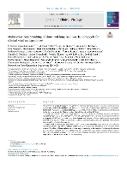Multicenter benchmarking of short and long read wet lab protocols for clinical viral metagenomics

Autor
Lopez-Labrador, F Xavier
Huber, Michael
Sidorov, Igor A
Brown, Julianne R
Cuypers, Lize
Laenen, Lies
Vanmechelen, Bert
Maes, Piet
Fischer, Nicole
Pichler, Ian
Storey, Nathaniel
Atkinson, Laura
Schmutz, Stefan
Kufner, Verena
van Boheemen, Sander
Mulders, Claudia E
Grundhoff, Adam
Blümke, Patrick
Robitaille, Alexis
Hubáčková, Klára
Mourik, Kees
Boers, Stefan A
Stauber, Lea
Salmona, Maud
Cappy, Pierre
Ramette, Alban
Franze', Alessandra
LeGoff, Jerome
Claas, Eric C J
Rodriguez, Christophe
de Vries, Jutte J C
Datum vydání
2024Publikováno v
Journal of Clinical VirologyRočník / Číslo vydání
173 (August)ISBN / ISSN
ISSN: 1386-6532ISBN / ISSN
eISSN: 1873-5967Metadata
Zobrazit celý záznamKolekce
Tato publikace má vydavatelskou verzi s DOI 10.1016/j.jcv.2024.105695
Abstrakt
Metagenomics is gradually being implemented for diagnosing infectious diseases. However, in-depth protocol comparisons for viral detection have been limited to individual sets of experimental workflows and laboratories. In this study, we present a benchmark of metagenomics protocols used in clinical diagnostic laboratories initiated by the European Society for Clinical Virology (ESCV) Network on NGS (ENNGS). A mock viral reference panel was designed to mimic low biomass clinical specimens. The panel was used to assess the performance of twelve metagenomic wet lab protocols currently in use in the diagnostic laboratories of participating ENNGS member institutions. Both Illumina and Nanopore, shotgun and targeted capture probe protocols were included. Performance metrics sensitivity, specificity, and quantitative potential were assessed using a central bioinformatics pipeline. Overall, viral pathogens with loads down to 10(4) copies/ml (corresponding to C(T) values of 31 in our PCR assays) were detected by all the evaluated metagenomic wet lab protocols. In contrast, lower abundant mixed viruses of C(T) values of 35 and higher were detected only by a minority of the protocols. Considering the reference panel as the gold standard, optimal thresholds to define a positive result were determined per protocol, based on the horizontal genome coverage. Implementing these thresholds, sensitivity and specificity of the protocols ranged from 67 to 100 % and 87 to 100 %, respectively. A variety of metagenomic protocols are currently in use in clinical diagnostic laboratories. Detection of low abundant viral pathogens and mixed infections remains a challenge, implying the need for standardization of metagenomic analysis for use in clinical settings.
Klíčová slova
Benchmark, Clinical viral metagenomics, Wet lab protocols
Trvalý odkaz
https://hdl.handle.net/20.500.14178/2595Licence
Licence pro užití plného textu výsledku: Creative Commons Uveďte původ 4.0 International







